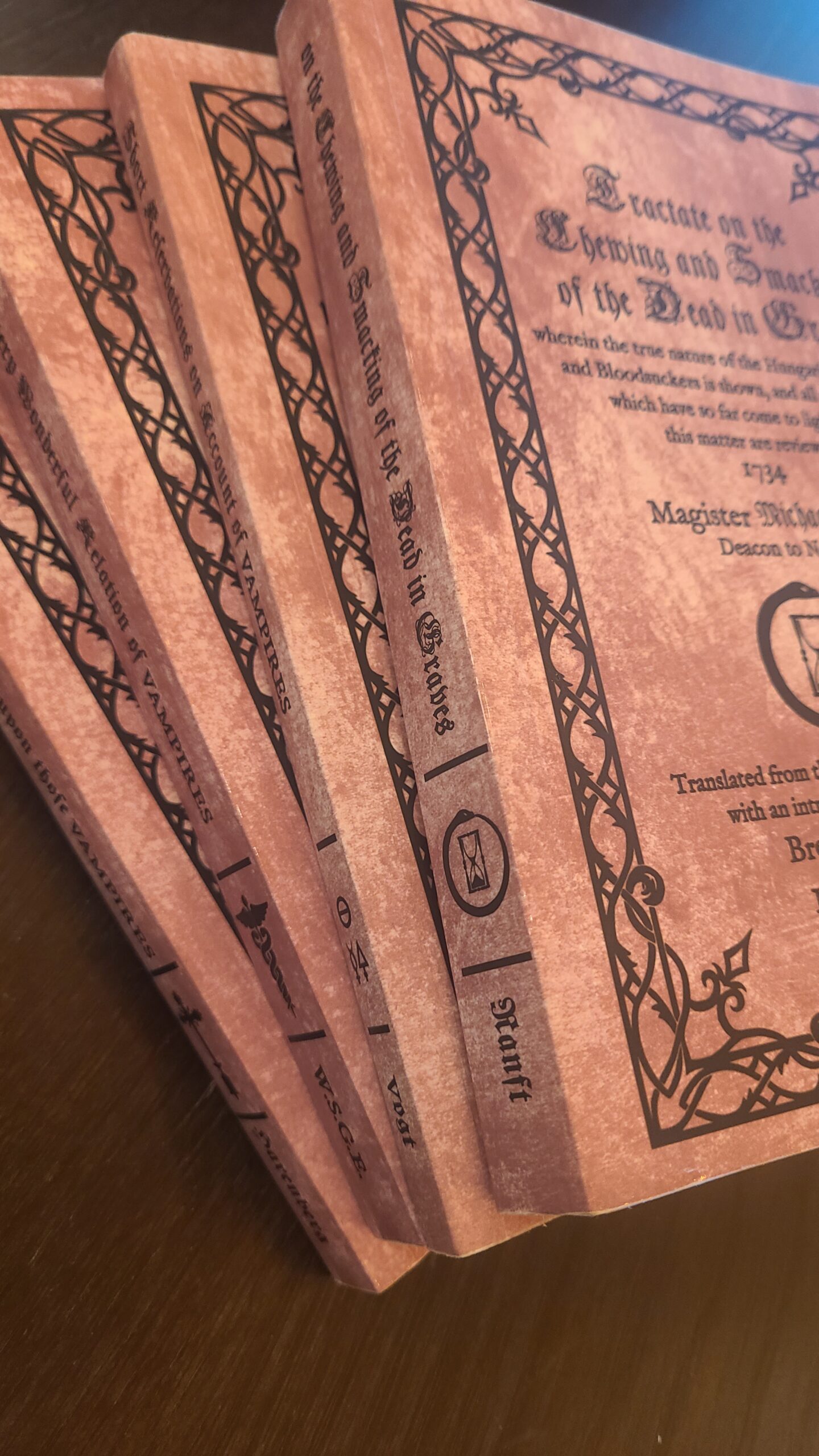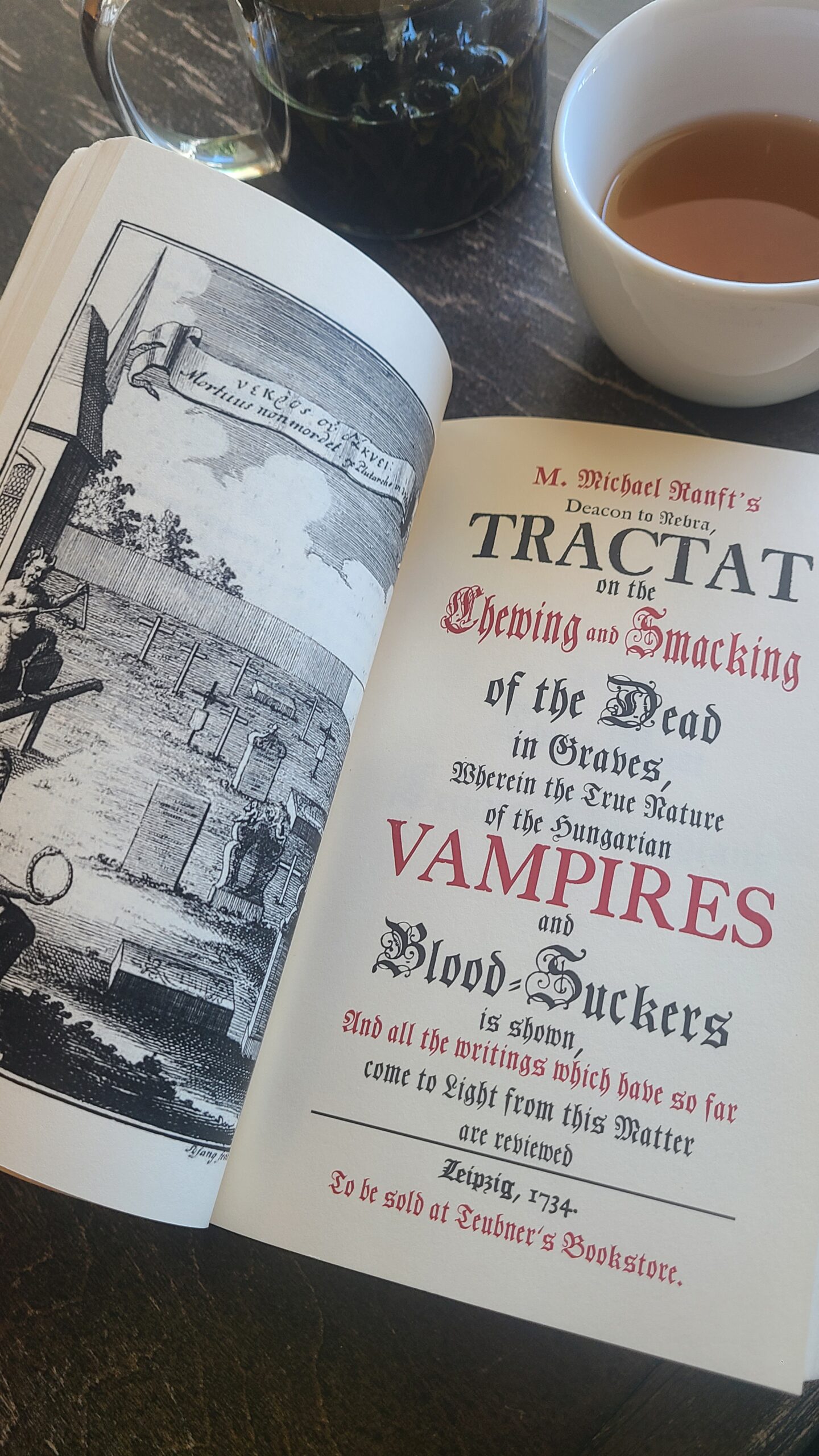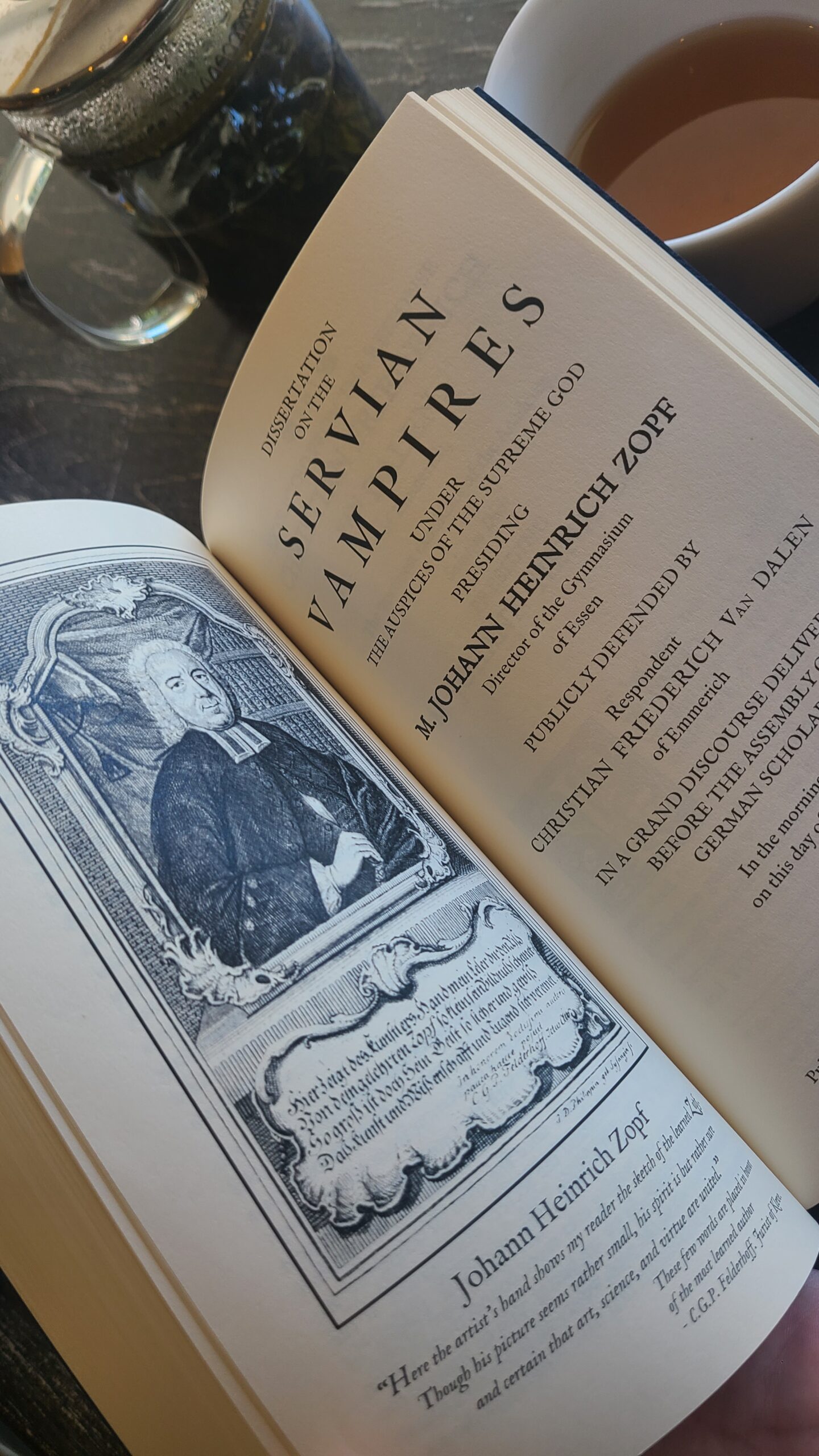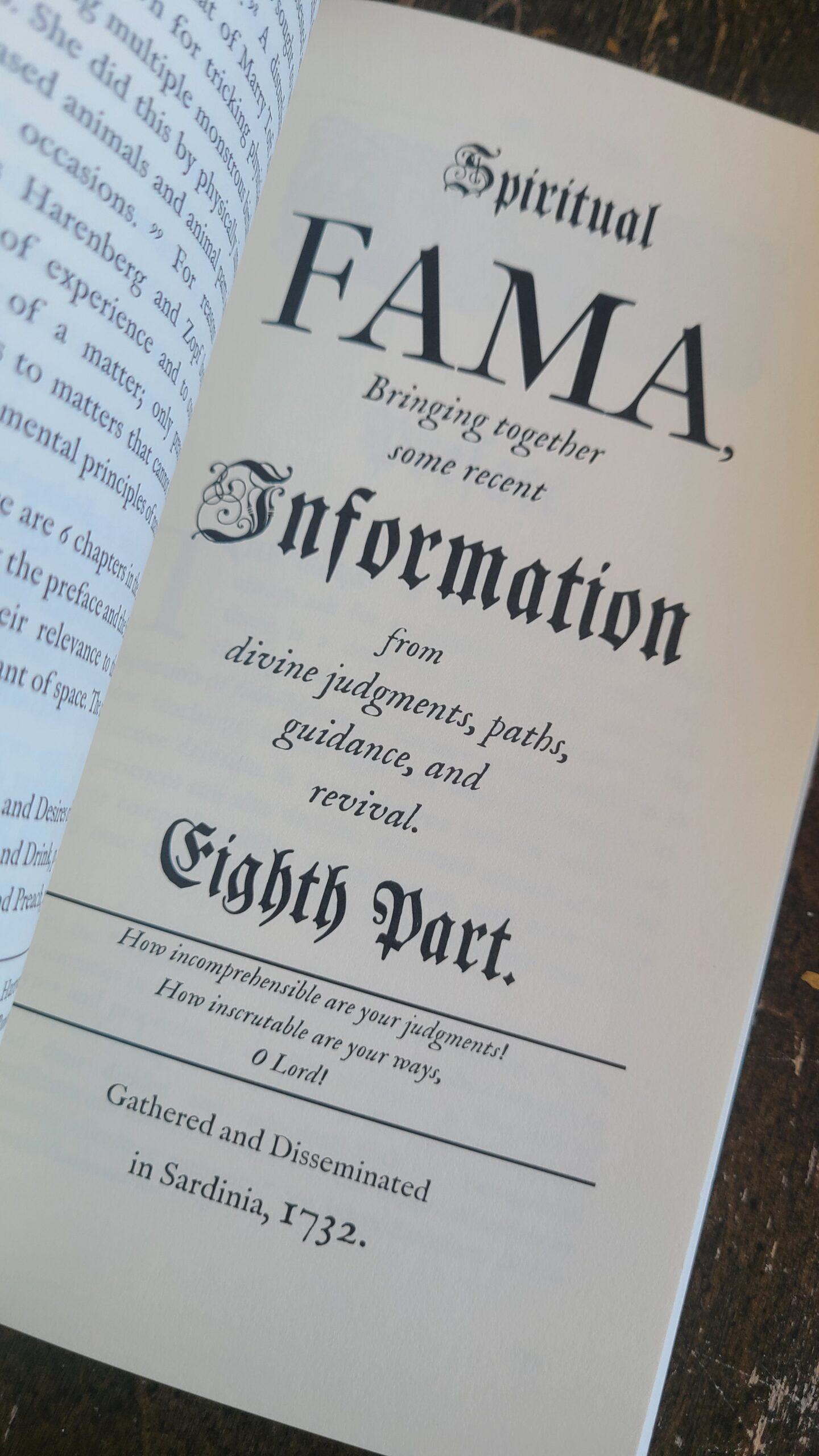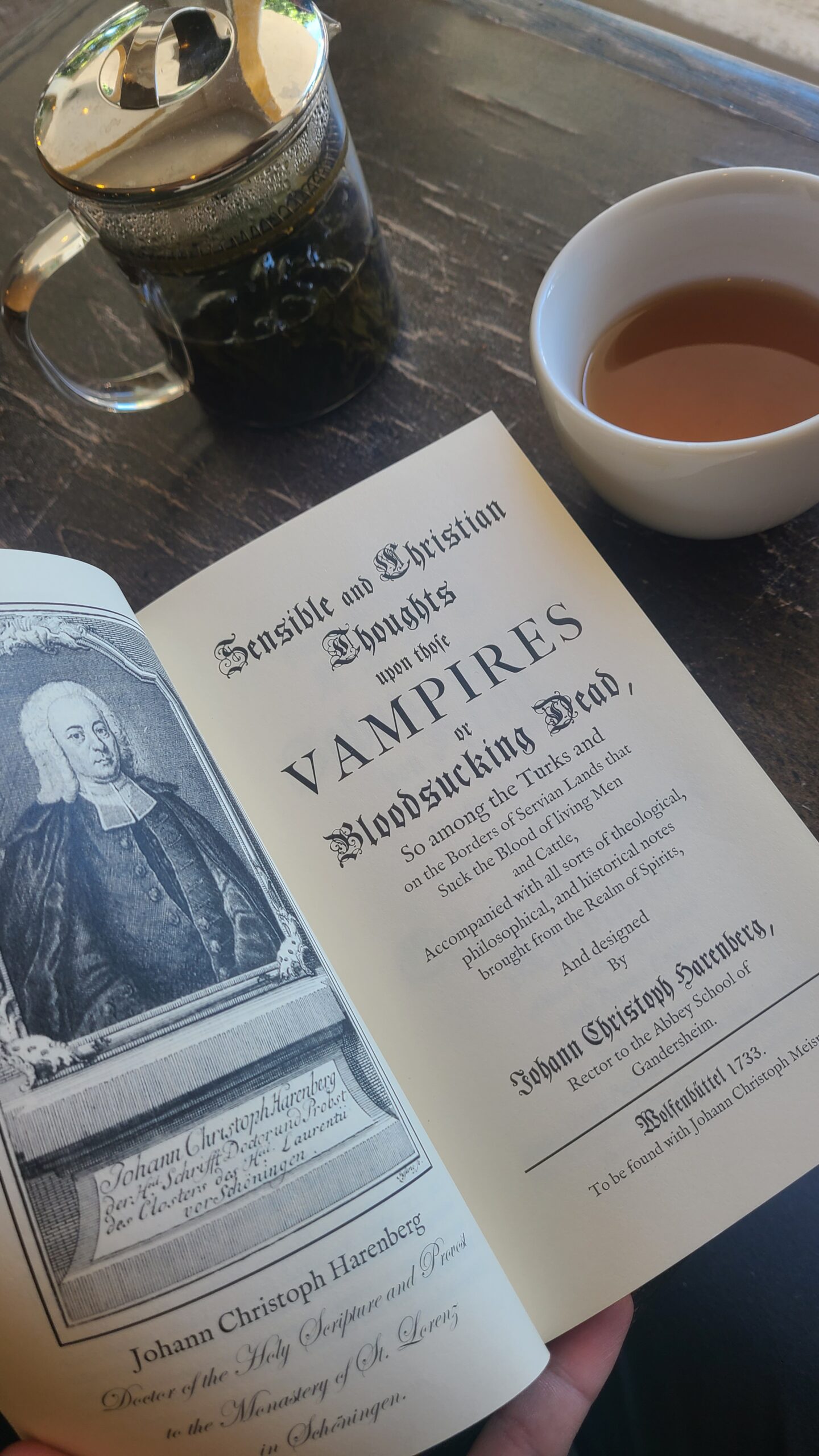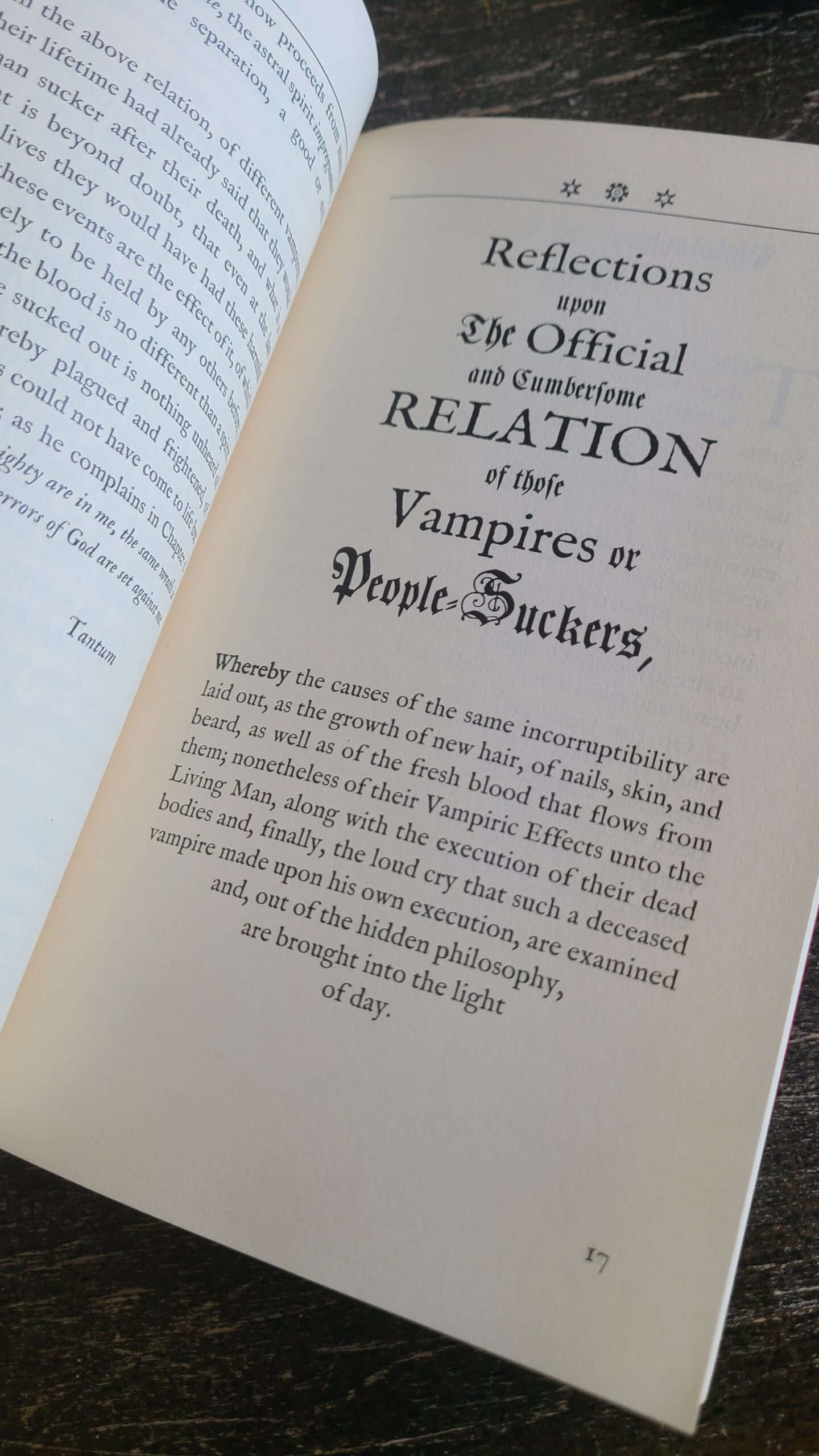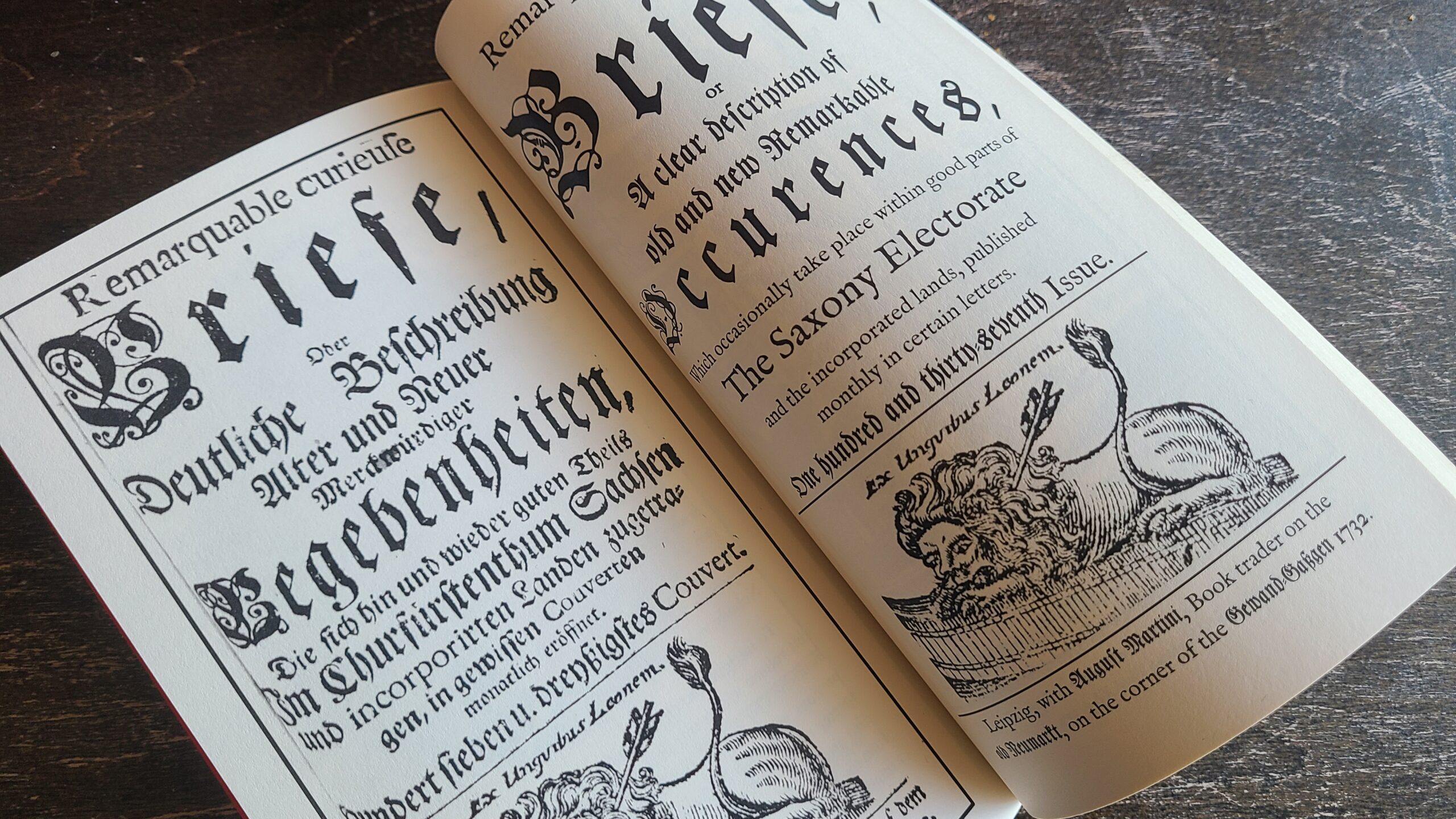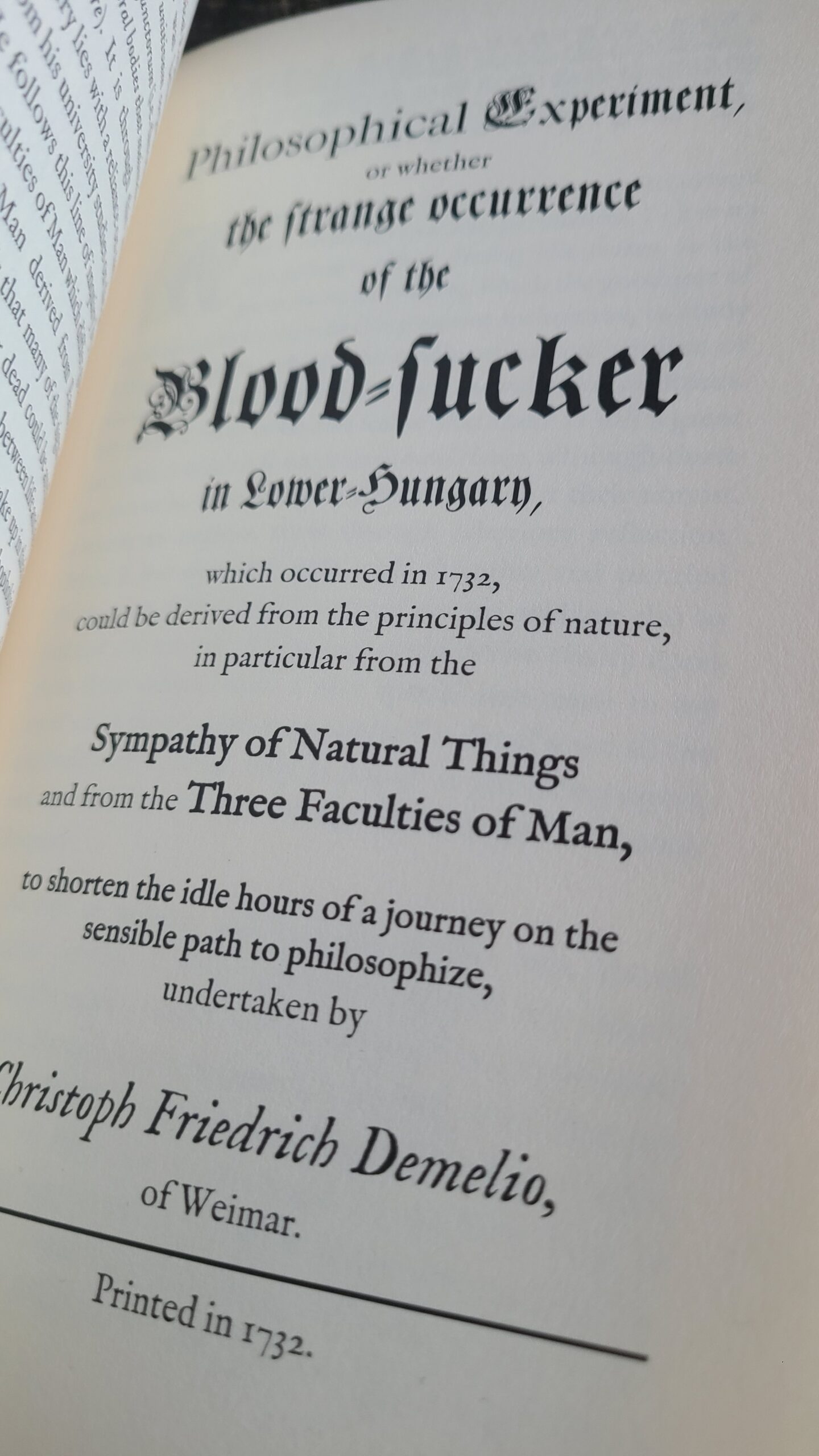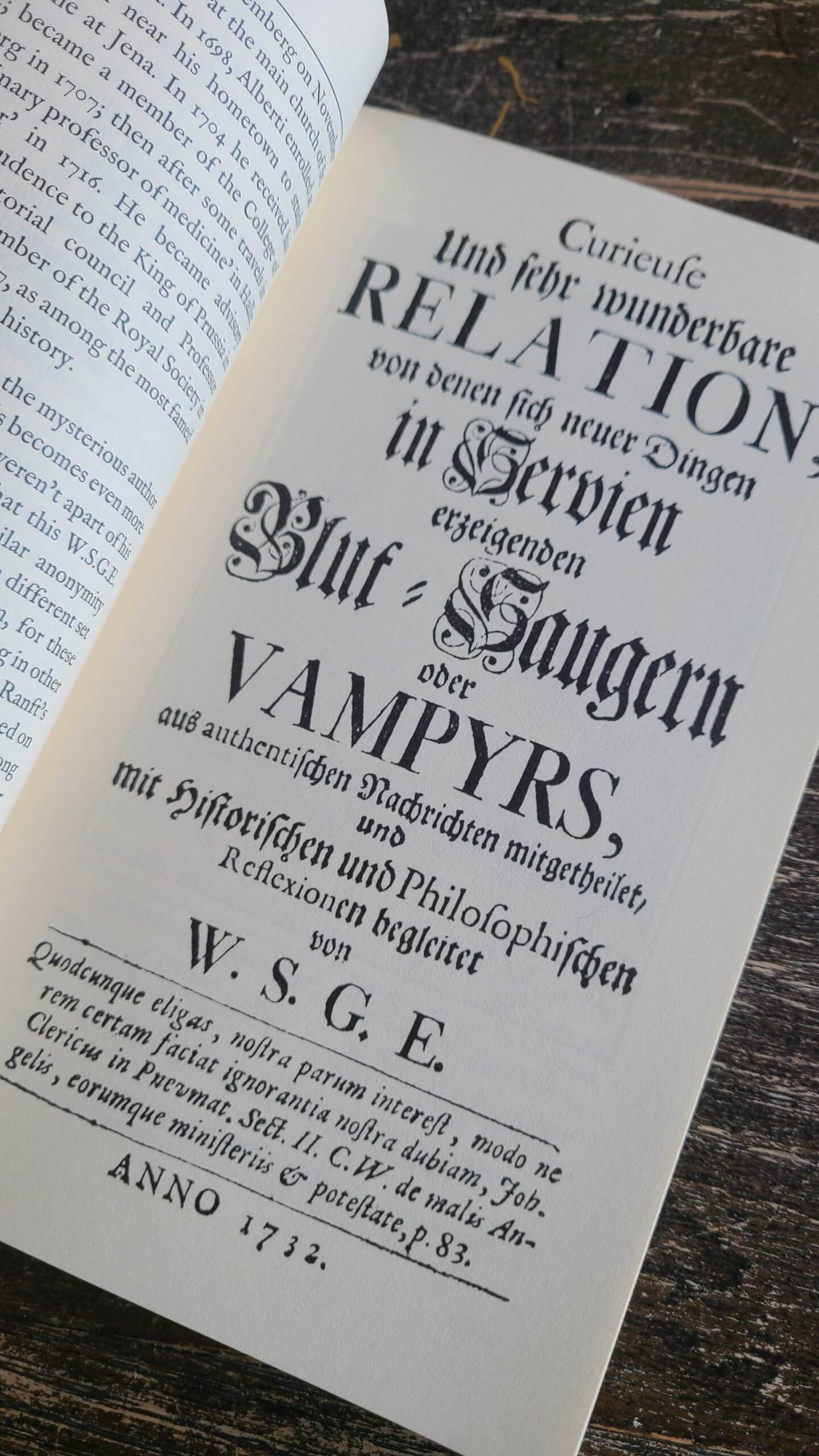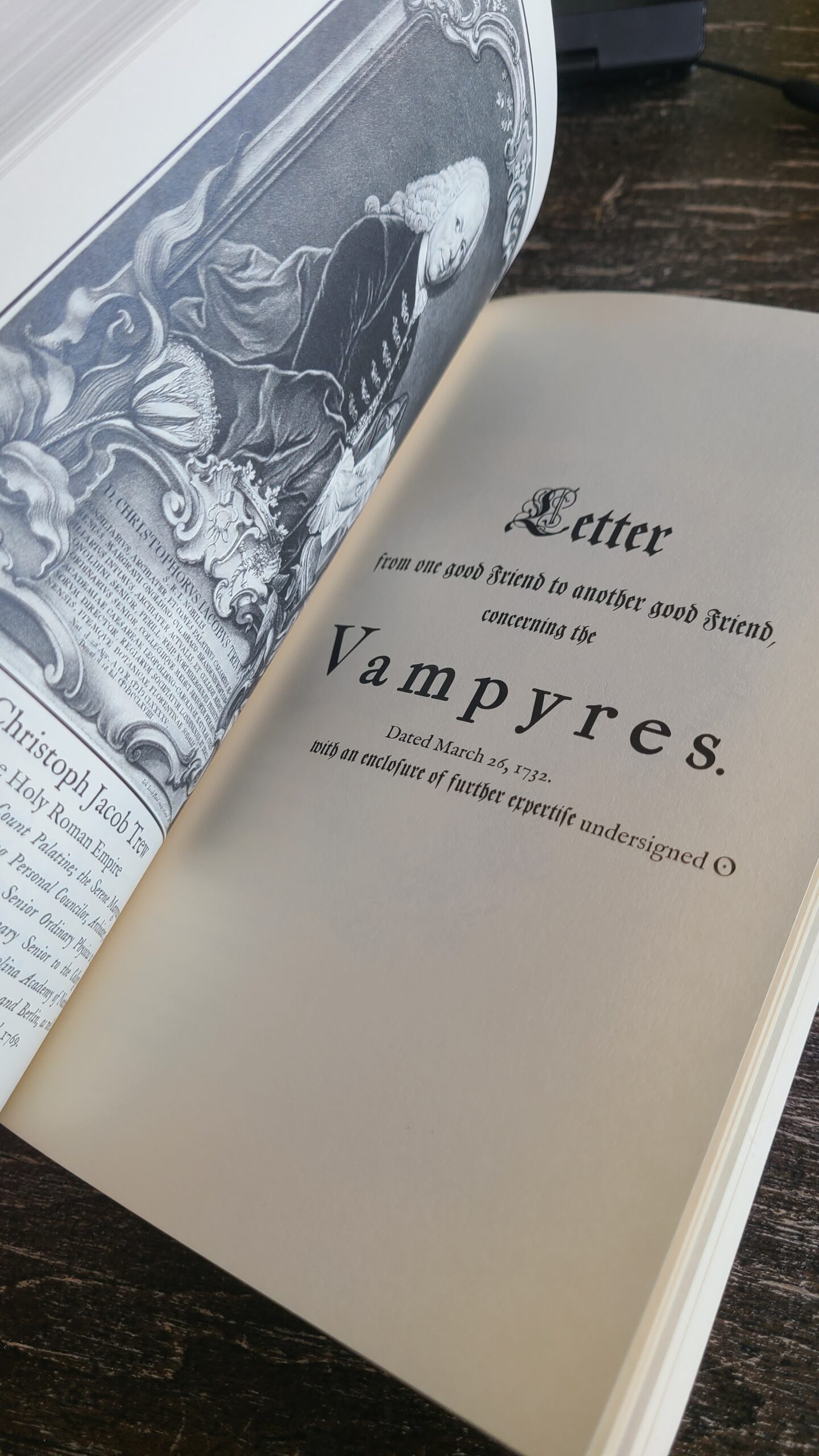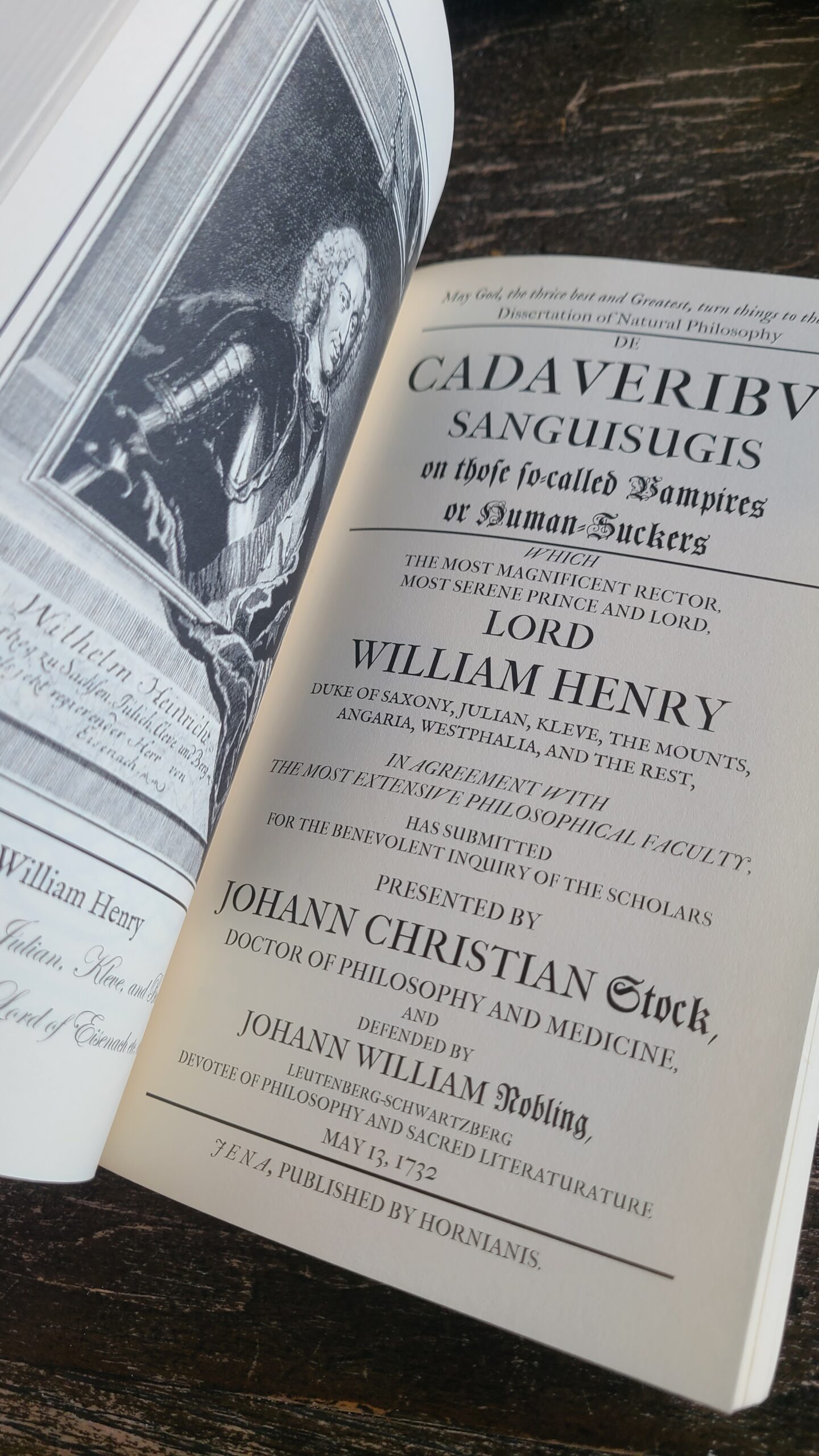The Historic Vampire Debate Vol. I-IV
On January 7, 1732, physicians from the regiments of the Holy Roman Empire arrived at a village to conduct an inquisition after a strange plague had killed 17 persons within a span of two months. It was declared by the locals that the cause of the plague were the malevolent specters of the recently deceased which they named Vampyre. They implored the imperial authorities to allow the exhumation and destruction of the decedent bodies because it was feared that if a Vampire would cause someone to die, that person must become a Vampire in turn. After the surgeons exhumed and examined 13 bodies, they found that many of them had remained without the slightest signs of corruption in their graves, covered and filled with liquid blood, skin pealing like a snake from their limbs, and other strange findings as they dissected the bodies. After the autopsies were completed, the locals executed and burned the bodies. The autopsy report made its way throughout Europe, causing the nobility of princes, dukes, and even King Frederic William I to request scholarly investigation into the historical, theological, and scientific circumstances of these events. The Historic Vampire Debate brings four volumes that compile selected scholarly works that sought to explain the mysteries associated with strange plague that killed 17 persons in a rural village in Serbia. Each volume contains writings from a different perspective derived from alchemy, medicine, theology, and natural philosophy , and are collectively filled with illustrations and maps.
Volume Alchemy:
- Anonymous – Official and Cumbersome Relation upon those Vampires or People-Suckers, which have emerged in this and previous years in the Kingdom of Servia. In addition to its reasoning, a Handwritten Letter from an Officer of the Prince Alexandrian Regiments of Medvedia in Servia, to a Famous Doctor of the University of Leipzig. (1732)
- Gottlob Vogt’s Short Reservations upon those Official Relations on account of Vampires or People and Cattle Suckers, etc. (1732)
- Gottlob Vogt’s The subtly recurring but once again rejected Third Part of Man, appended with a Doctrine of those Temperaments, etc. (1732)
- Remarquable Cureiuse Briefe. Issue 137, No. 121. (1732)
- Christoph Demelio – Philosophical Experiment, or whether the Strange Occurrence of the Blood-Sucker in Lower Hungary, which occurred in 1732, could be derived from the principles of nature, in particular from the Sympathy of Natural Things and from the Three Faculties of Man, etc. (1732)
- Imperial Correspondence from the Austrian State Archives in Vienna, dated December 12, 1731 to August 5, 1732.
Volume Medicine:
- W.S.G.E. – Curious and very Wonderful Relation of those New Things in Servia presenting Bloodsuckers or Vampires (1732)
- Undersigned
 – Letter of One Good Friend to Another Good Friend Concerning Vampyres, Dated March 26, 1732.
– Letter of One Good Friend to Another Good Friend Concerning Vampyres, Dated March 26, 1732. - Stock – De Cadaveribus Sanguisugus, on those so called Vampires or Human-Suckers, etc. Dated May 13, 1732.
- Fritsch – Presumptive Thoughts of a Weimar Medici upon those Vampires, etc. (1732)
- Volumen Actorum – Documents from the Berlin-Brandenburg Academy of Sciences Archive.
Volume Theology:
- Johann Christoph Harenberg – Sensible and Christian Thoughts upon those Vampires or Bloodsucking Dead (1733)
- The 8th Part of Johann Samuel Carl’s Spiritual Fama (1732, Printed in 1733)
- Johann Heinrich Zopf’s Dissertation on the Servian Vampires (1733)
- and Zopf’s Dissertation on What is Just Concerning the Cruentation of Cadavers (1737)
Volume Occult Philosophy:
- Michael Ranft’s Tractate on the Chewing and Smacking of the Dead in Graves (1734)
- Containing both Dissertationes de Masticatione Mortuorum in Tumulis (1725/1728) that analyze the case of Peter Plogojovitz that occurred in 1725 and his expanded writings on the Arnold Paole Case of 1732.
- Ranft’s critiques of all the writings that came out upon the matter.
- Opinion of the Royal Prussian Society of Sciences upon those Vampires or Bloodsuckers, Dated March 11, 1732.
